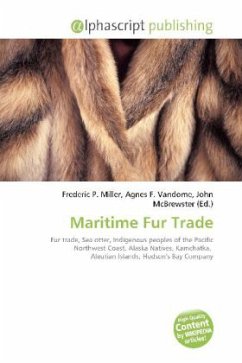Please note that the content of this book primarily consists of articles available from Wikipedia or other free sources online. The Maritime Fur Trade was a ship-based fur trade system that focused on acquiring furs of sea otters and other animals from the indigenous peoples of the Pacific Northwest Coast and natives of Alaska. The furs were mostly sold in China in exchange for tea, silks, porcelain, and other Chinese goods, which were then sold in Europe and the United States. The maritime fur trade was pioneered by the Russians, working east from Kamchatka along the Aleutian Islands to the southern coast of Alaska. British and Americans entered during the 1780s, focusing on what is now the coast of British Columbia. The trade boomed around the turn of the 19th century. A long period of decline began in the 1810s. As the sea otter population was depleted the maritime fur trade diversified and transformed, tapping new markets and commodities while continuing to focus on the Northwest Coast and China. It lasted until the middle to late 19th century. Russians controlled the Alaskan coast during the entire era. The coast south of Alaska saw fierce competition between, and among, British and American trading vessels.
Bitte wählen Sie Ihr Anliegen aus.
Rechnungen
Retourenschein anfordern
Bestellstatus
Storno








